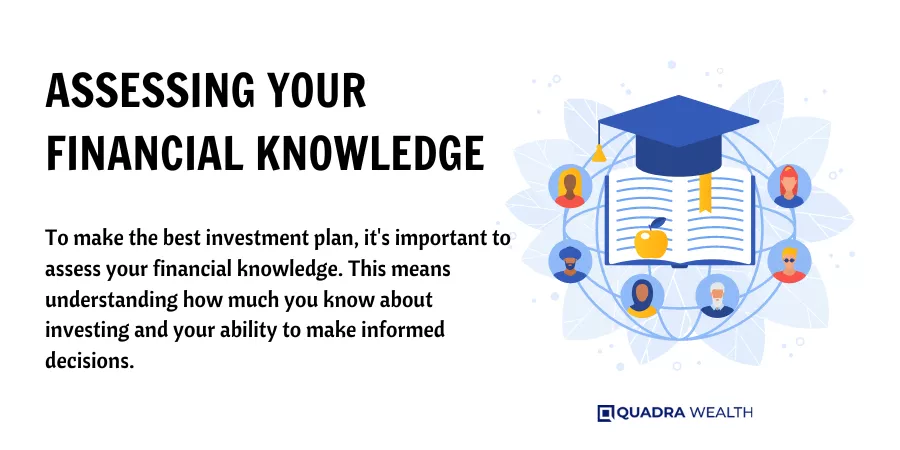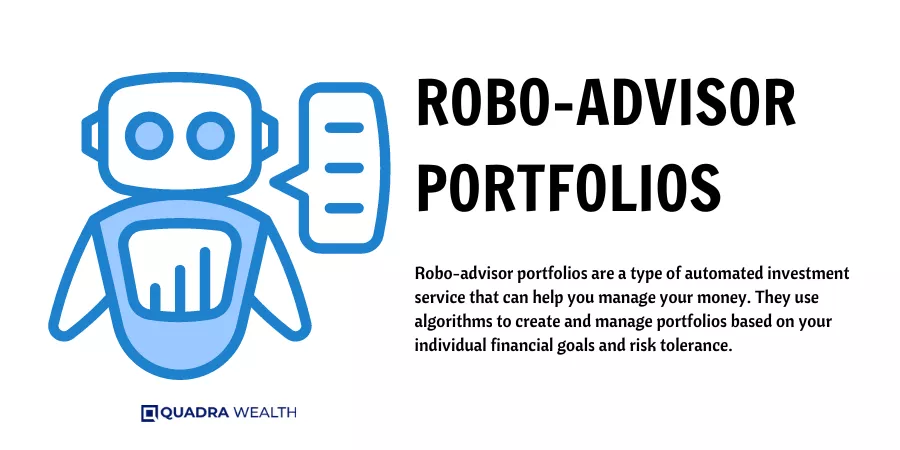Navigating the world of investments can often feel overwhelming, especially when you’re trying to align your financial goals with the right investment plan. With a myriad of choices, from long-term growth stocks to short-term high-yield savings accounts, making informed decisions becomes crucial.
This comprehensive guide paves your way toward understanding various investment options and selecting a plan that suits your risk tolerance, timeline, and objectives. Ready? Let’s dive in and make smart investing simple!
Key takeaways
● Understanding investments is important for achieving financial goals and comes with risks and rewards.
● Top long-term investment options include growth stocks, stock funds, bond funds, dividend stocks, real estate, and small-cap stocks.
● Best short-term investment options include high-yield savings accounts, certificates of deposit, money market funds, and short-term corporate bond funds.
● Alternative investment options include robo-advisor portfolios, exchange-traded funds (ETFs), Series I Bonds, and rental housing.
Understanding Investments
Investments play a crucial role in achieving your financial goals and come with risks and rewards.

The Importance of Investments
Money placed in investments can grow big over time. This growth helps us face the future with more ease. It’s like planting a seed that grows into a strong tree. We can count on this tree when we need shade or fruit, just as we rely on our investments for money later in life.
But investing is not always easy or safe. We need to know what we are doing to avoid losing our seeds before they become trees.
Risks and Rewards in Investing
Putting money in stock market or bonds can be risky. You may lose part of your cash if the company does not do well. But there’s also a chance to make more money than you put in. This is the reward side of investing.
Stocks from high-growth companies could make a lot of money for you when they increase in value. Bond funds are safer but have lower rewards as they pay out set amounts over time. It’s important to balance risks and rewards by having different types of investments, like stock funds, bond funds, and real estate.
Make sure to keep learning about investing risks and investment returns so you can choose wisely.

Top Long-Term Investment Options
The top long-term investment options include growth stocks, stock funds, bond funds, dividend stocks, real estate, and small-cap stocks.

Growth Stocks
Growth stocks belong to companies that are expected to rise or grow faster than other firms. These businesses often put their earnings back into the company instead of paying out dividends.
This helps them expand, make new things, and boost sales. There is a high chance for you to earn more money with growth stocks because their prices can jump up fast. But be careful, because their prices can also fall down quickly too! So yes, they offer higher returns but come with more risk compared to some other investment options like dividend stocks.
- High return
- Capital appreciation
- Long-term growth
- Higher risk
- No dividends
- Market uncertainty
Stock Funds
Stock funds are a great way for long-term growth. You buy shares of many stocks in one go. This helps spread your money across many companies. If one stock does poorly, others may do well to balance it out.
They can be riskier than some other investments, but they also have the chance for more rewards over time. Stock funds can include dividend stocks that give you a share of the company’s profit, or small-cap stocks from newer firms with quick growth potential.
Beyond just growth and value stocks, there are also market index funds that track a certain set of stocks like S&P 500 index fund.
- Diversification
- Professional management
- Accessibility
- Fees
- Market fluctuations
- Lack of control
Bond Funds
Bond funds are a top choice for long-term investments. These funds have bonds in them. Bonds are debts from companies or the government that you can buy. You earn money when they pay you back with interest.
One good thing about bond funds is that they offer income. This makes them great for people who need regular cash flow. But, like all investments, there’s risk also with bond funds.
The risks come if the issuer of the bond can’t pay it back or if interest rates go up. So, think about these things before investing in the bond fund.
- Income generation
- Diversification
- Lower risk
- Interest rate risk
- Lower returns
- Credit risk
Dividend Stocks
Dividend stocks are a great pick for long-term investors. These stocks belong to companies that share their profits with stock owners. Buying individual stocks, whether they pay dividends or not, is better suited for intermediate and advanced investors. But you can buy a group of them in a stock fund and reduce your risk. Dividend stock funds are a good selection for almost any kind of stock investor but can be better for those who are looking for income. Those who need income and can stay invested for longer periods may find these attractive.
The payouts can grow, often by 8 or 10 percent each year.
This is like getting a pay raise every year! But not all dividend stocks are safe bets. It’s important to choose wisely and spread your money among different types of investments. Diversification helps safeguard your funds from major losses if one investment does poorly.
- Steady income
- Potential for growth
- Lower volatility
- Market sensitivity
- Dividend cuts
- Limited growth potential
Real Estate
Real estate is a top choice for long-term investments. It gives you steady cash over time. The money you make from rent can add up! As your property value goes up, so does your wealth.
This means you could sell the property later for more than what you bought it. Real estate also helps spread out risk in your investment portfolio. For example, if stock market fall, real estate may not be affected as much.
You don’t have to worry too much because this type of investment is considered safe compared to others like stocks or bonds.
- Steady income
- Appreciation
- Diversification
- Liquidity
- Maintenance costs
- Market dependency
Small-Cap Stocks
Small-cap stocks refer to the shares of smaller companies with a market capitalization usually ranging between $300 million and $2 billion. These stocks have the potential for quick growth, making them attractive to investors looking for high returns.
However, it’s important to note that small-cap stocks are generally considered riskier investments compared to larger companies. They can be more volatile and subject to rapid price fluctuations.
Despite the risks, small-cap stocks also provide income opportunities for investors who believe in their growth potential. It’s essential for investors to carefully evaluate their risk tolerance and do thorough research before investing in small-cap stocks.
- High growth potential
- Market inefficiencies
- Diversification
- Higher risk
- Limited resources
- Liquidity concerns
Best Short-Term Investments
Some of the best short-term investment options include high-yield savings accounts, certificates of deposit, money market funds, and the short-term corporate bond fund.

High-Yield Savings Accounts
High-yield savings accounts are a great option for short-term investments. These accounts offer higher interest rates compared to traditional savings account, which means your money can grow faster.
Different financial institutions offer different rates, so it’s important to compare and find the best APY (Annual Percentage Yield) that suits your needs. The Federal Deposit Insurance Corp (FDIC) insures high-yield savings accounts for up to $250,000, providing stability and protection of your capital.
This makes them a safe choice for those who prioritize security while still wanting their money to work for them. Investing in a high-yield savings account allows you to earn more interest without taking on too much market risk compared to other investment options.
- Safety
- Steady returns
- Liquidity
- Lower returns
- Inflation risk
- Opportunity cost
Certificates of Deposit
Certificates of Deposit, also known as CDs, are a type of investment that offers a fixed interest rate for a specific period of time than traditional savings account. They can be a good option for short-term savings goals because they generally have higher interest rates than traditional savings accounts. CDs are sold based on term length, and the best rates are generally found at online banks and credit unions.
CDs are also FDIC-insured, which means your money is protected up to $250,000 per depositor, per institution. However, it’s important to note that with CDs, you must keep your money invested until the maturity date in order to avoid any penalties.
Early withdrawal may result in losing some of your earned interest. Overall, CDs can be a safe and predictable way to grow your money over a set period of time while enjoying the benefits of higher interest rates and FDIC protection.
- Predictable returns
- Safety
- Low risk
- Liquidity
- Opportunity cost
- Inflexibility
Money Market Funds (MMFs)
These are a type of investment that offers stability and protection for your money. These funds invest money in short-term debt securities, such as Treasury bills and commercial paper, which have high credit quality.
One key advantage of MMFs is their high level of liquidity, meaning you can easily buy or sell them whenever you need to. However, because they prioritize safety over growth, MMFs tend to provide low returns compared to other investments.
Despite this, they remain a popular choice for investors who are looking for a reliable source of income while keeping risk to a minimum.
- Safety
- Liquidity
- Low volatility
- Low returns
- Market fluctuations
- Interest rate risk
Short-Term Corporate Bond Fund
Short-term corporate bond fund is an investment options that have an average maturity ranging from one to five years. These funds are considered relatively low-risk because they are less affected by changes in interest rates compared to longer-term bonds.
Many investors, especially retirees or those looking for stable income, find these funds attractive because they can provide regular cash flow. Although short-term corporate bond funds offer slightly higher yields than government bond fund, they are still considered safer than high-risk investments like growth stocks.
So if you’re looking for a more secure investment option with steady returns, short-term corporate bonds fund might be worth considering.
- Steady income
- Lower risk
- Diversification
- Lower returns
- Interest rate risk
- Credit risk
Alternative Investment Options
– Robo-Advisor Portfolios offer automated wealth management services with lower fees and personalized portfolios based on risk tolerance.
– ETFs provide diversification and trade like stocks, offering exposure to various asset classes.
– Series I Bonds are low-risk government bonds that protect against inflation while providing a fixed rate of return.
– Rental Housing allows investors to generate income through property rentals and potential appreciation in value.

Robo-Advisor Portfolios
Robo-advisor portfolios are a type of automated investment service that can help you manage your money. They use algorithms to create and manage portfolios based on your individual financial goals and risk tolerance.
One example is M1 Finance, which allows investors to make their own decisions while providing guidance and automation. Another option is Acorns, an investment app that facilitates automated investing with small amounts of money.
These robo-advisor portfolios offer different risk levels depending on your comfort level, and they provide diversification by investing in a mix of assets like stocks and bonds. Plus, they typically charge lower commissions compared to traditional financial advisors or brokers.

Exchange-Traded Funds
ETFs are investment options that function like individual stocks. They can be a good choice for long-term investors and are often more accessible for those with lower amounts to invest.
Similar to mutual fund, ETFs allow for trading throughout the day, providing flexibility compared to other investment options. One of the key advantages of ETFs is their ability to provide diversification by investing in a variety of assets such as stocks, bonds, or commodities.
Additionally, ETFs offer exposure to alternative investments like real estate, commodities, and international markets. With these features, ETFs can be an attractive option for investors looking to build a diversified portfolio over time.
Series I Bonds
Series I Bonds are a type of government-issued investment that is considered very safe. They are great for people who don’t want to take on much risk and worry about the possibility of losing their money.
One of the advantages of Series I Bonds is that they can help protect your investment against inflation. This means that even if prices go up, the value of your bonds will increase too.
It’s important to note that there is a limit of $10,000 per calendar year for purchasing Series I Bonds. Additionally, if you receive an annual tax refund, you can apply up to an additional $5,000 towards buying more Series I Bonds.
Rental Housing
Rental housing is one of the best investment options in 2023. It can provide a steady income for investors. The amount of money you invest will determine the level of risk and potential return.
If you have a larger investment, you can consider higher-risk options with potentially higher returns. Rental housing is also a good choice for those who have less time and knowledge about investing.
Bank products or ETFs and mutual funds are recommended for these types of investors.
Guide to Choosing the Best Investment Plan
Learn how to choose the best investment plan for your financial goals and make informed decisions about risk tolerance, time horizon, financial knowledge, and investment capacity. Discover the strategies that will help you build a diversified portfolio for long-term success.

Understanding Risk Tolerance
Risk tolerance refers to your ability and willingness to handle fluctuations in the value of your investments. It is important to understand your risk tolerance because it helps determine the right investment strategy for you.
Some people are comfortable with taking on more risk and potentially earning higher returns, while others prefer lower-risk investments that offer more stability but lower potential returns.
Your risk tolerance depends on factors such as your financial goals, time horizon, and personal comfort level with market volatility. By understanding your risk tolerance, you can make informed decisions about which investments align best with your needs and preferences.
Identifying Your Time Horizon
Identifying your time horizon is a crucial step in finding the best investment plan for your financial goals. Your time horizon refers to how long you have until you need to use the money you’re investing.
Different investment plans are suitable for different time horizons. If you have a longer time horizon, you can afford to take some risks with higher-return but more volatile investments. Your time horizon allows you to ride out the ups and downs of the market, hopefully on the way to greater long-term returns. With a longer time horizon, you can invest in stocks and stock funds and then be able to hold them for at least three to five years.
If you have short-term goals, such as saving for a vacation or buying a car, it’s important to choose low-risk investments with quick liquidity. This means investments that are less likely to lose value and can easily be converted into cash when needed.
Examples of short-term investments include high-yield savings account, CDs, and MMFs.
On the other hand, if you have long-term goals like saving for retirement or buying a house in 10 years, you may be able to take on higher-risk investments with potentially higher returns.
These types of investments give your enough money, more time to grow and recover from any market fluctuations along the way.
Assessing Your Financial Knowledge
To make the best investment plan, it’s important to assess your financial knowledge. This means understanding how much you know about investing and your ability to make informed decisions.
You can evaluate your financial knowledge by considering factors like your experience with investments, familiarity with different investment options, and understanding of basic financial concepts.
It’s also helpful to assess any gaps in your knowledge or areas where you may need more information. Keep in mind that while online resources can provide valuable information, seeking advice from a qualified professional is always a good idea when making investment decisions.

Evaluating Your Investment Capacity
To find the best investment plan for your financial goals, it’s important to evaluate your investment capacity. This means assessing how much money you can comfortably invest without putting yourself in a difficult financial situation.
It’s crucial to have a clear understanding of your current financial situation and obligations before making any investment decisions. Consider factors such as your income, expenses, debts, and emergency savings.
By evaluating your investment capacity, you can make informed decisions about how much money you can allocate toward investments while still maintaining stability in your overall financial picture.
Importance of Diversification in Investments
Diversification is important in investments because it helps reduce risk and protects against potential losses. When you diversify your investments, you spread them across different asset classes, sectors, and geographic regions.
This means that if one investment performs poorly, the impact on your overall portfolio is minimized. Diversification also allows you to capture different opportunities for growth and income as various asset classes perform differently in different economic conditions.
By avoiding concentrating all your investments in a single asset class or company, you can avoid significant losses if that investment performs poorly. Diversification helps achieve a balance between risk and reward because different investments have varying levels of risk and potential returns.
One key investment strategy for diversification is asset allocation – dividing your investments among different asset classes to create a diversified portfolio.

Utilizing Investment Tools for Beginners
Learn how to leverage the power of robo-advisors, investment apps, and brokerage firms to start your investment journey on the right track. Ready to take control of your financial future? Read on!

Robo-Advisors
Robo-advisors are a type of investment tool that uses algorithms and automation to provide personalized investment advice and manage portfolios. They are a popular choice for investors looking for low-cost options and convenience.
One example of a robo-advisor is M1 Finance, which allows investors to automate their wealth management while still making their own financial decisions. Compared to traditional advisors or brokers, robo-advisors often charge lower commissions.
For instance, M1 Finance does not charge monthly fees but has a minimum balance fee of $50 and charges for paper copies of tax documents. Another popular investment app is Acorns, which enables automated investing with small amounts of money by rounding up transactions and investing the change in ETFs once the account reaches $5.

Investment Apps
Acorns and M1 Finance are two investment apps that are highly recommended for beginners. Acorns work by rounding up your transactions and investing the spare change in exchange-traded funds (ETFs) once your account reaches $5.
On the other hand, M1 Finance does not charge any monthly fees but has a minimum balance requirement of $50 and charges for paper copies of tax documents. Investment apps like these provide an easy and convenient way to start investing small amounts of money.
However, it is still important to consult with financial advisors who can offer guidance on the best investment options based on your goals and risk tolerance.
Brokerage Firms
Brokerage firms play a crucial role in financial planning. These firms allow individuals to open brokerage accounts, which are necessary to buy stocks, bonds, and other investment products.
Opening a brokerage account is often affordable, even with a small amount of money. Depending on your financial knowledge and time availability, you can choose between self-directed or managed brokerage accounts.
Self-directed accounts give you control over your investments, while managed accounts provide professional guidance. It’s important to research different brokerage firms and compare their fees, services, and reputation before choosing one that aligns with your investment goals and preferences.
Here’s What do you want to know about investment safety, portfolio allocation, and low-risk options are answered to provide readers with clarity and informed decision-making guidance.
What is the safest investment with the highest return?
One investment option that is considered relatively safe with the potential for high returns is a high-yield savings account. These accounts provide a higher interest rate than traditional savings accounts, allowing your money to grow over time.
While the returns may not be as substantial as other riskier investments, such as stocks or real estate, they offer stability and protection against market volatility. It’s important to note that no investment is entirely risk-free, but high-yield savings accounts are generally considered low-risk options for those looking for a balance between safety and return on investment.
What percentage of your portfolio should be safe investments?
The percentage of your portfolio dedicated to safe investments depends on your personal preferences, financial goals, and risk tolerance. Generally speaking, it is recommended to have a portion of your portfolio allocated to safe investment as a way to protect your capital and provide stability.
This could range from 10% to 30% or more, depending on factors such as your age, investment timeline, and overall financial situation. It’s important to consider how much risk you are comfortable with and what level of potential loss you can afford.
Consulting with a qualified professional can help you determine the right percentage for your specific needs.
What are the best low-risk investments?
If you’re looking for low-risk investments, there are a few options to consider. Treasury bills, money market mutual funds, and Treasury Inflation-Protected Securities (TIPS) are considered low-risk investments because they are backed by the government.
High-yield savings account and CDs are also listed as low-risk investment options. Series I savings bonds aim to protect cash value from inflation and are considered a low-risk investment.
Investment-grade corporate bonds can be moderately safe but carry higher risks compared to other low-risk investments. Robo-advisors, like M1 Finance, automate investing and charge lower commissions, making them another potential low-risk option to explore.
Conclusion
In conclusion, finding the best investment plan for your financial goals requires understanding the importance of investments and assessing your risk tolerance. By considering long-term options like growth stocks, stock funds, bond funds, dividend stocks, real estate, and short-term options like high-yield savings account or money market funds, you can create a diversified portfolio that suits your needs. While investing can build wealth, you’ll also want to balance potential gains with the risk involved. And you’ll want to be in a financial position to do so, meaning you’ll need manageable debt levels, have an adequate emergency fund and be able to ride out the ups and downs of the market without needing to access your money.
Don’t forget to utilize investment tools like robo-advisors or brokerage firms to make informed decisions. Remember to consult with a qualified professional before making any investment choices.
Happy investing!
FAQs
To find the best investment plan for your financial goals, consider factors such as your risk tolerance, time horizon, and desired returns. It may be helpful to consult with a financial advisor for personalized advice.
Common types of investment plans include stocks, bonds, mutual funds, real estate, and retirement accounts like 401(k)s and IRAs. Each option has its own potential risks and rewards.
Yes, you can adjust your investment plan if your goals or circumstances change over time. It’s important to regularly review and reassess your investments to ensure they align with your current needs.
Yes, investing involves risks such as market fluctuations and potential loss of capital. Understanding these risks is crucial before making any decisions during your investing journey. Consider diversifying your portfolio to help manage risk.
Yes, if you’re invested for the long haul, says certified financial planner Austin Litvak, director of investment research for O’Brien Wealth Partners in Boston.
“Certain things going on with today’s market are unique to history and that’s not going to last forever. If you’re a long-term investor, the Federal Reserve is still credible and will get inflation under control,”











